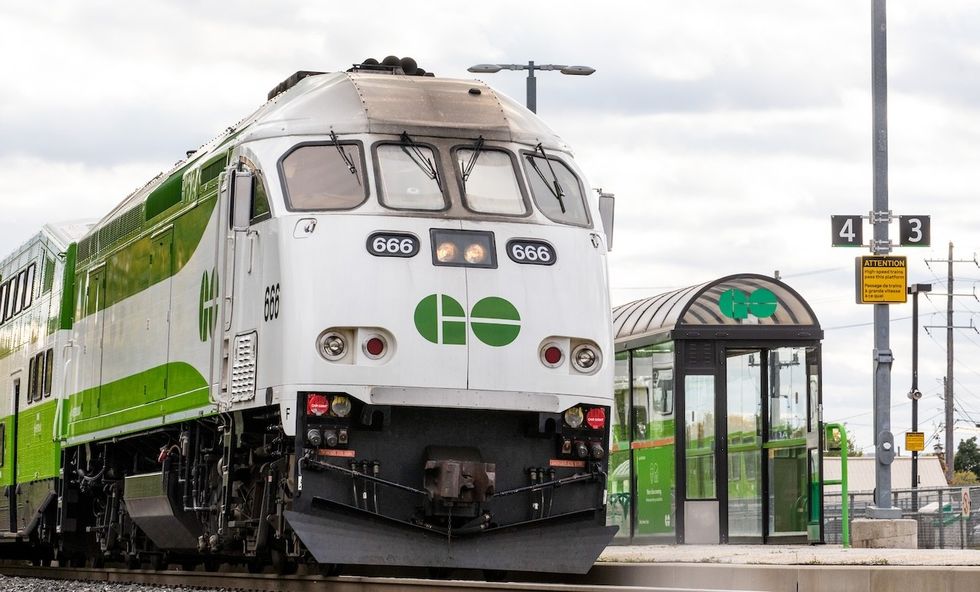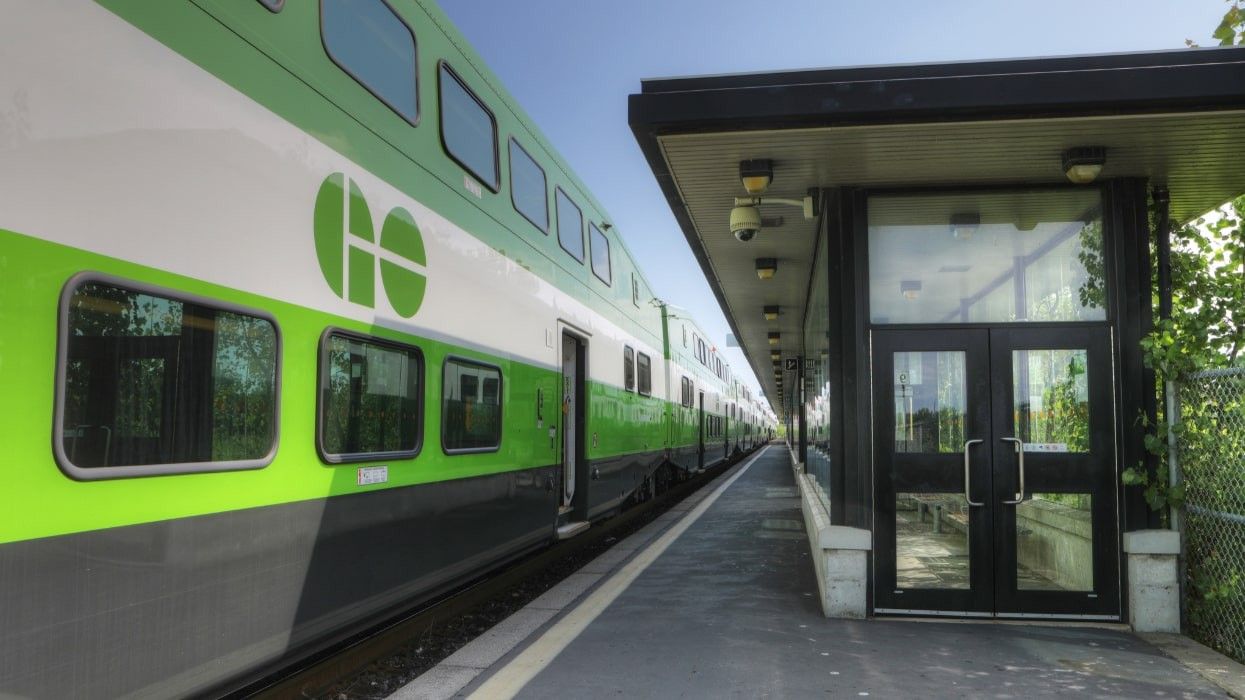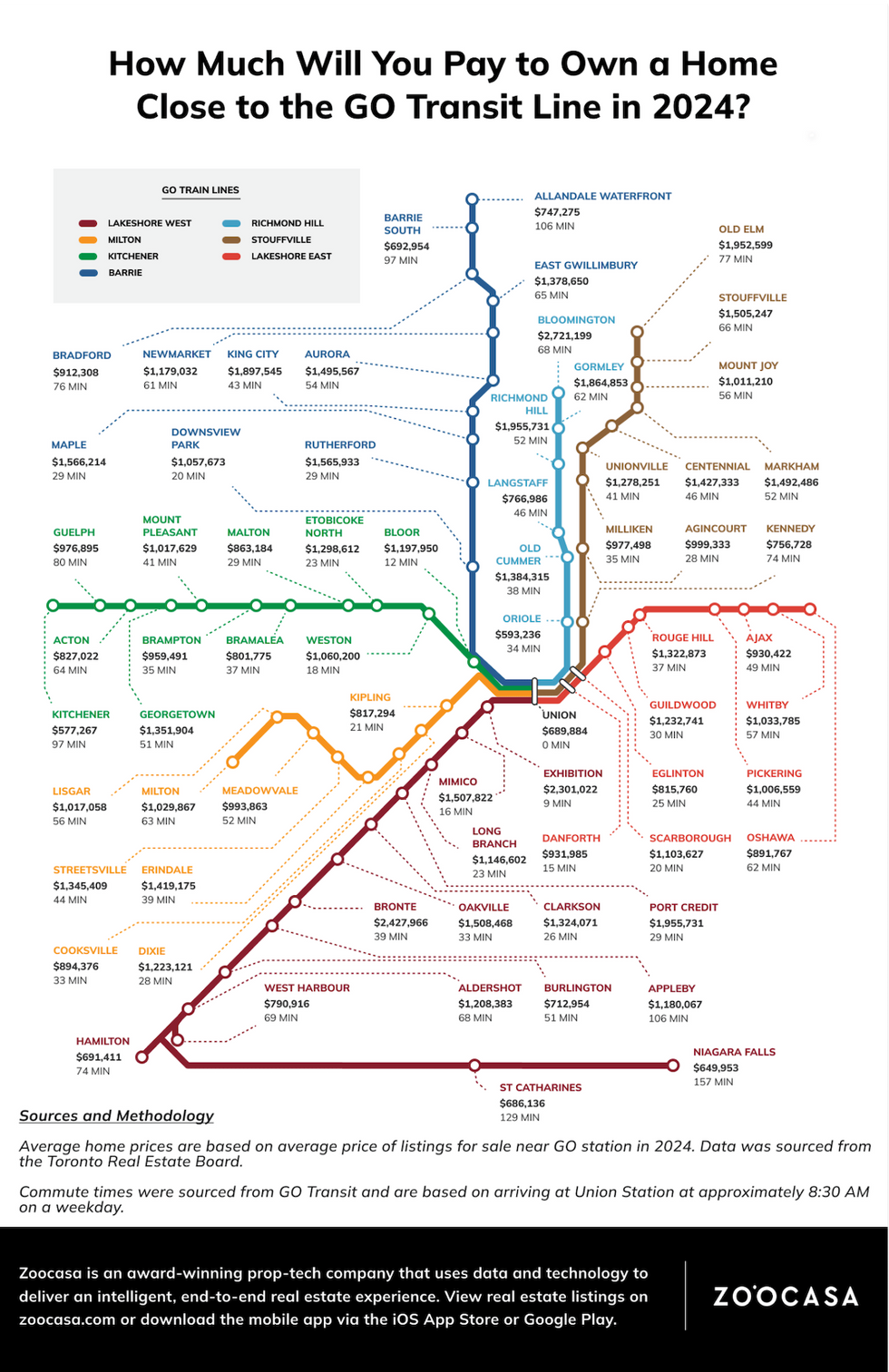Toronto was already moving in the direction of Manhattan pre-pandemic, something that was reflected in everything from sky-high rents and the shoebox condo craze, to a shift away from a prioritization of the car. Then, once the pandemic rolled in to drive the city’s home prices to new heights and render remote work an everyday reality, countless Toronto residents set their sights on regions outside of the city core.
Not only do homes in smaller cities outside of downtown Toronto typically offer more space for less money, the city lights can be just a simple GO Train ride away from coveted places to call home, like Maple, Kitchener, Burlington, and Oakville. Making life easy, the green and white train is equipped with reliable Wi-Fi and pulls right into Union Station, immediately snapping passengers out of sleepy suburban mode and into the city’s bustle.
The future of Ontario – in particular, when it comes to the smaller cities near Toronto – is one of heightened density and new, self-contained communities surrounding existing and future GO stations. Essentially, the need for a car is removed from the equation – something that was once unheard of in suburbia and smaller Greater Toronto Area (GTA) cities.
In a new report, Zoocasa crunched the numbers to see where it’s the most affordable to purchase property along the GO Station line. Zoocasa analyzed home prices based on listings for sale by 68 GO Train stations from the Toronto Regional Real Estate Board, as well as commute times based on a weekday arrival at Union Station around 8:30 am. While some GO Train commutes can be a mere 15 minutes, others can take over an hour.
Those looking for the most affordability along the GO Station route may want to consider Oriole Station on the Richmond Hill line. Located in North York, with an average commute time of 34 minutes to Union Station, Oriole Station’s nearby listings were priced at an average of $590,000. For a similar price point, but a longer commute (perhaps for those who don’t need to be in the office daily), the average price point for homes near Kitchener station is $580,000. The station sits a one-hour and 37-minute GO Train ride from Union Station. Niagara Falls takes the third place spot in terms of affordability, with homes for sale at an average price of $650,000. It does, naturally, come with a lengthy commute time of two hours and 37 minutes (and an influx of summertime tourists).
On the other end of the spectrum, Bronte Station – located at the west end of the forever pricey Oakville – houses the most expensive homes for sale, with an average price of a cool $2,430,000. Living here means a relatively manageable 40-minute commute to the city. Nearby, Port Credit’s homes take the second priciest position, with an average price just under $2M. Meanwhile, Old Elm Station – located in the Town of Stouffville – offers homes at a similar price of $1,950,000, but with a longer commute time of an hour and 15 minutes.

For those who prefer to clock as few minutes on the GO Train as possible, Zoocasa highlights how those living near Eglinton Station – where home prices are on average $816,000 – enjoy just a 15-minute commute to downtown Toronto. Meanwhile, on the Milton line, Cooksville Station sits just a 33-minute commute from downtown and offers homes at an average of $890,000. On the Lakeshore East line, homes near Danforth Station cost on average of $931,985, but Union Station is only a 15-minute ride away.
It’s interesting to note that homes for sale in close proximity to Union Station have an average price of a relatively low $690,000. However, as the Zoocasa report highlights, this is due to the fact that these homes are predominantly condos and apartments.
As we look to the future of GTA living, the GO Train will become a daily staple in a growing number of people's lives, especially as shiny new communities begin to take shape surrounding these transit hubs. Facilitating this, the Province continues to invest heavily into GO Transit infrastructure, most recently announcing that the GTA is in store for the largest GO train expansion in over a decade.






















